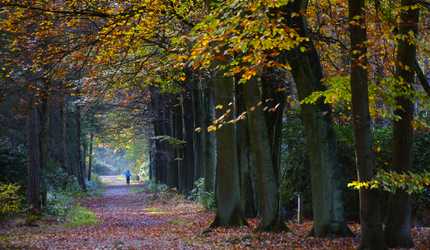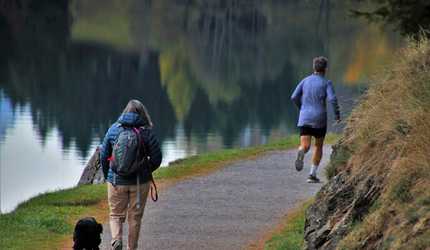Why All Runners Should do Hill Training

If you’ve ever spoken about running and training you’ve probably found your way to the topic of hill running in Leeds. Running hills evokes many responses ranging from disgust to joy. But, why do runners do hill training?
It’s a bit of a marmite sandwich for many runners. Yet, the more challenging a hill is, the more it’s going to benefit you and your running progress. And in Leeds you’re not short of a steep hill and some cracking views to go with it.
Here’s why you should get onboard with the benefits of hill running.
Speed-Strength-Endurance
The science of movement tells us that to see changes you need to apply what they call ‘stressors’ to challenge and change the body. In running terms this could be running further, faster or up steeper inclines. Does running up hill build muscle?
Research backs that a hill training programme increases the overall strength-speed-endurance in distance runners – aka anyone running a minimum of a couple of kilometres. More specifically, the 5k runner has been shown to benefit greatly from hill training. This is because running up and down hills basically makes your upper body and leg muscles stronger. And those flats you previously found challenging that bit easier.
Dr Bengt Saltin advanced the understanding of the exercise physiology in this field and linked hill running to high concentrations of aerobic enzymes in the key muscles. These beauties enable the muscle to function at high intensity for longer periods. In layman’s terms you’ll get higher knee lifts and faster strides which will get you up that hill quicker.
Injury Risk
Running hills builds speed, strength and endurance but is hill training damaging to the runner?
You’ll be pleasantly surprised to know that despite it being a taxing ‘stressor’ and a fitness test, hill running is actually good for your body. Take a typical run on a flat surface. Naturally your weight shifts forward and puts a strain on your shins and joints. When running uphill the body works on the calf muscles, quads, hamstrings and glutes; with the body taking less of a beating. Who wouldn’t want to reduce the risk of injury and increase the strength of the body?
Calorie Burning
For some, running is a great way to burn calories and lose weight. Consider the extra strength and endurance required to run a hill and the bigger calorie reserve this will eat into. It’s not an accurate science but the steeper the incline is the bigger the effort it will take to conquer it; and the more calories you can expect to burn!
Session Ideas
Coming full circle to the research it’s been proven that around 6-weeks of regular hill running sessions will bring about a noticeable improvement in your running performance. Particularly for those race runners training for the hilly events you will need to keep your hill training sessions in Leeds fresh and interesting. You might be thinking ‘how long should a hill run be?’
Hills and Stairs
Without making it too complicated you can start with a gentle incline and work your way up from there. The Kirkstall Rollercoaster over in west Leeds is a great run route example that builds in difficulty over 6- hills that gradually get steeper and longer.
Or you can go hard on the 161 Armley Killer Steps; a 30-minute session will burn upwards of 500 calories; it’s great on the knees and actually improves bone strength; and it’s a super toner of the core, thighs and bum. Then there’s also one of the steepest inclines that was once used for motorbike racing over at Post Hill.
Intensity
For more specialised hill training routines we recommend using sessions that challenge the individual based on their ability. Good examples include ‘timed hills’ where the challenge is to race against the clock – usually on a whistle – to beat your marker on the hill.
Or run the 80 percent rule around a park loop with one decent hill in there; you will run 10-minutes easy and 8-minutes hard and alternate with the hill incline providing the biggest test. You’ll be stretching yourself with these running sessions. And don’t forget to practice relaxing the body and running downhill as it all contributes to the speed, strength and endurance training of the body.
Running hills is a great option for any runner whatever ability you are. There’s so much research out there that shows how the body improves in both speed and endurance, but also becomes less injury prone. That’s without considering the more cosmetic effect of calorie burning that some people motivated to run will be after.
To get you going up and down those hills check out our choice routes and session ideas above. And in the words of Kate Bush ‘It doesn’t hurt me […] be running up that road, be running up that hill, if only I could”… and oh yes you can!



